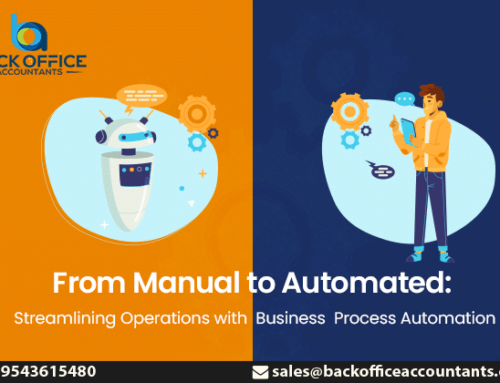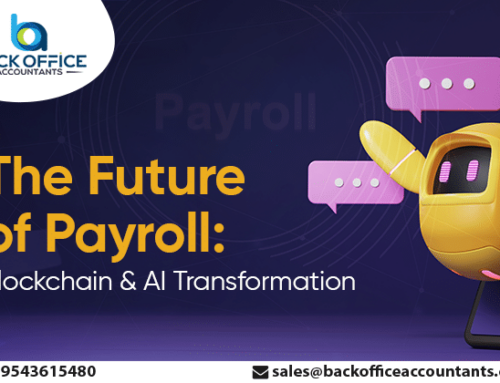Procure to pay challenges is an end-to-end process that guides an organization from purchasing to paying for the goods and services it needs. While it may seem straightforward on surface, this process is often complex due to the various stakeholders, functions and challenges involved in every stage.
Different teams must coordinate and collaborate to ensure the business doesn’t overpay for goods and services and can make timely, seamless payments without disruptions.
Each department has a role and stake in this process, from procurement to accounts payable and leadership, which can become cumbersome if standardized procedures aren’t in place.
At Back Office accountants, our accounting experts often work with businesses facing challenges in their procure-to-pay process at different stages. If you an entrepreneur starting out, one of the best things you can do is to understand these common issues in advance and take steps to avoid them.
This blog covers the most common procure to pay challenges across different business sectors for you. First, we help you understand the complexities of Procure-to-pay process and then dive into the challenges. Read on:
Why Procure-to-pay is complex?
Manual Processes: The traditional process involves high-volume paperwork, which includes manual data entry and manual approval workflows that lead to errors, delays, and increased costs of total operations.
Data Management Problems: The P2P process has no choice but to manage large volumes of data, including purchase orders, supplier information, and payment details. All these details exponentially grow with the increase in scale of operations. Most businesses do not have sufficient digital integration systems, making data management cumbersome.
Lack of Right Supplier Management: Even businesses with the right tech stack and standardizing technologies may still run into supplier management problems. Managing diverse suppliers requires proper communication, protocols for risk assessment, and monitoring, which a business may not be able to handle sufficiently with existing resources and this complicates the entire process.
While there are many other issues that can complicate the P2P process, the three mentioned above are main causes of significant bottlenecks across all departments. How do these problems manifest? Let’s find out!
5 Common Procure to Pay Challenges and How to Overcome Them
Lack of Proper Collaboration between Departments: Tedious manual processes, siloed data, and a lack of standardized processes create bottlenecks and communication problems, causing delays at every stage of the procure-to-pay process. This directly impacts performance and can even strain relationships with suppliers.
Problems Evaluating Supplier Performance: Limited visibility into processes due to data integration issues often affects how supplier performance is assessed. Whether its verifying product quality or managing risks, the absence of accurate data and analysis can lead to poor supplier management, resulting in unreliable supplies, cost overruns, or even fraud. At Back Office Accountants, we ensure the right performance metrics are tracked, combining qualitative data to score each supplier and make informed decisions. This way, our clients can prioritize or replace suppliers in real time.
Delayed Payments or Payment Backlogs: Vendors frequently receive late or incorrect payments, often because invoices don’t match purchase orders—a common issue in teams without streamlined AP processes. A centralized platform with automated systems could help avoid these issues, but many businesses lack the infrastructure to ensure consistent data alignment across documents.
Budget Control Issues: Without clear visibility into costs, supplier performance, and process quality, budget issues arise. Overspending and budget overages happen when processes lack standardization and oversight. “Decentralized management complicates prompt purchasing decisions,” says a remote accounting expert at Back Office Accountants. “We use specialized tools to track and analyze the P2P process in real time, helping clients spot opportunities,” he concludes.
Compliance Risks: Even with an ideal tech stack and strong supplier management, businesses may still face compliance challenges that can result in penalties. “Fraud in P2P often stems from mismatched processes, misaligned priorities, and a lack of visibility,” notes another Accounts Payable expert at Back Office Accountants.
Inefficient P2P processes face more than just these five issues. Slow approvals, delays, and conflicts can worsen the situation. Each mistake leads to another, compounding the problem. These challenges can quickly escalate, making management harder. Fortunately, businesses can use automation tools to streamline each step.
Procure to Pay Challenges – How to Overcome?
There are many advanced tools available in the market that can drastically improve the entire process and overcome the challenges mentioned above. However, challenges still remain in regulation and management. There must always be a central authority who can craft a strategy, and manage all these elements to ensure they are perfectly synced to reach your P2P goals.
The best thing any business can do to overcome all Procure to Pay Challenges and ensure a smooth and profitable process is to outsource the work to an accounting firm that specializes in managing P2P processes.
Back Office Accountants, a trusted remote accountant with an exceptional track record in Accounts Payable and Receivable, Reconciliation Management, and comprehensive end-to-end back office accounting services, has the right expertise, tools, and bandwidth to help you lay a solid foundation and manage your P2P process. For more information on our services, you can contact us here.







